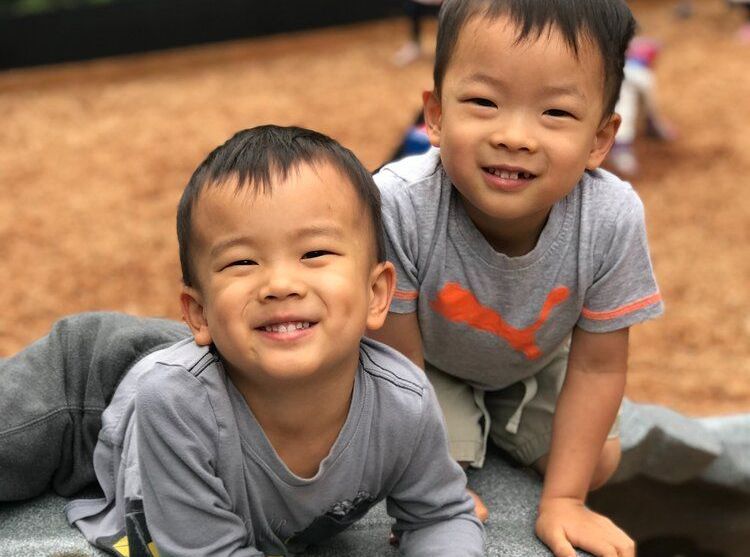Primary
2 3/4 - 6 years
As the children enter the Primary classrooms and discover enticing materials, they have the freedom to choose their own activities under the guidance of a Montessori-trained teacher. The Montessori hands on materials cultivate concentration, independence and a love of learning. While independent learning is emphasized to allow a child to grow at their own pace, a healthy emphasis is given to the development of social skills to foster empathy, respect and communication.
Our Primary Program is offered at the Main and Rossano Campuses set in park-like settings surrounded by evergreen and maple trees which form a beautiful background to our classrooms and outdoor play areas. Each of our ten classrooms accommodate children ages two years nine months up to age six, this 3+ year age span is consistent with Montessori philosophy. Classroom enrollment varies from 20-26 children with 2-3 teachers present.
Child-sized Environments
Our Primary classrooms are specially designed, child-sized environments that are filled with beautiful, developmentally appropriate, hands-on learning materials for your child to explore. Our Montessori trained staff introduce different materials according to a child’s skill level and interest. Children then have the freedom to make their own choices of these activities and work at their own pace. Trained guidance, freedom of choice, and the hands-on learning materials support your child in gaining foundational skills through their own efforts. Through this process, children build confidence in their own abilities and are excited for new challenges.
Mixed Age Classrooms
All the classrooms have a 3+ years age span beginning at 2 years 9 months to 6 years of age (program includes Kindergarten). The three year old child is in the age of language and motor development. They explore the classroom using all their senses. The four year old child eagerly begins to socialize and expands their activities into all areas of the classroom gaining important basic skills and expanding their ability to focus on large, multiple-step activities. As the four year old absorbs the concepts, the five year old expresses knowledge through reading, writing and more abstract math concepts. They are excited to become leaders and role models to their younger friends in the classroom. A community is created through respect of oneself, others and the environment.
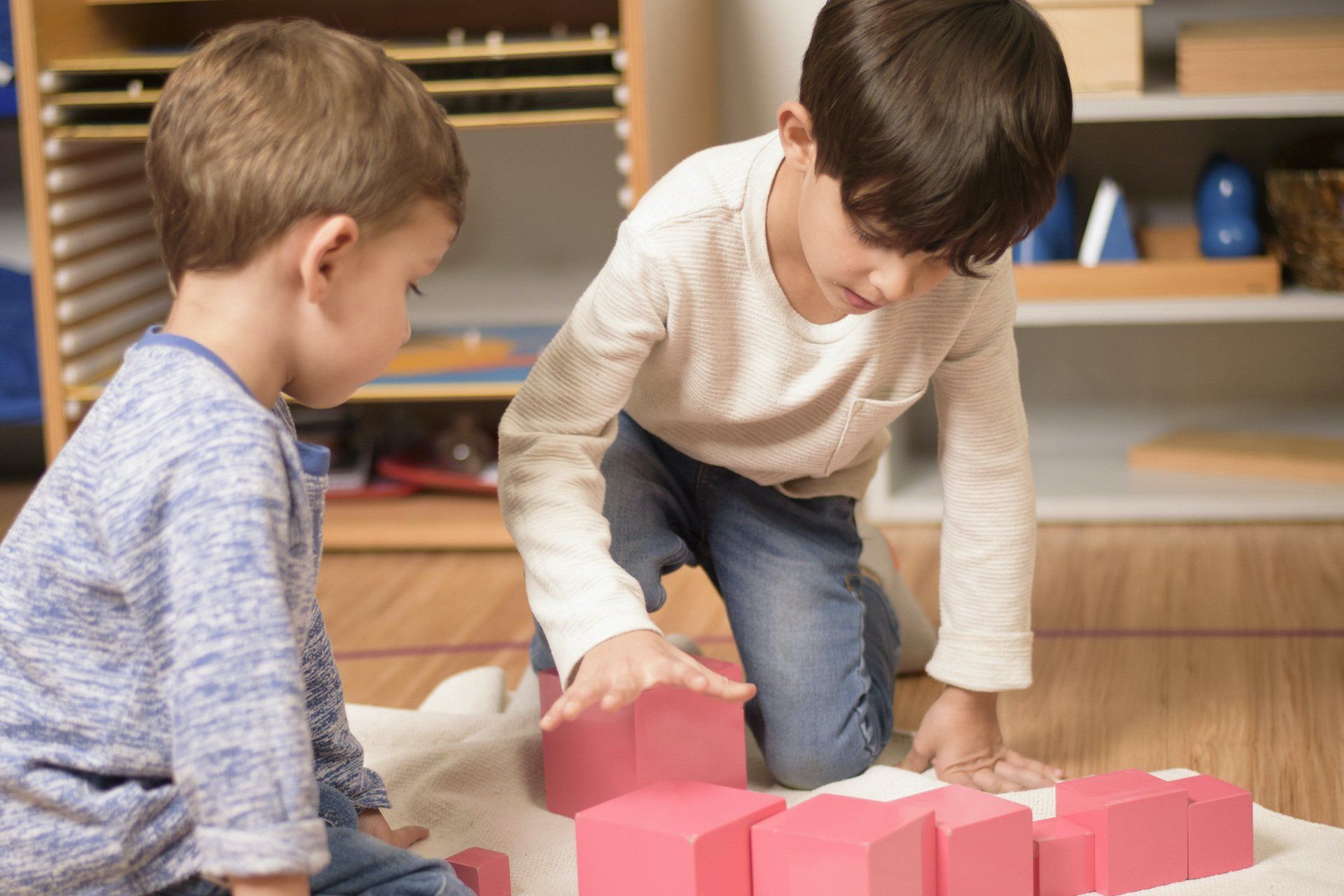
Highly Trained Staff
Our ten lead Montessori Primary teachers all hold college degrees and Montessori credentials from training programs accredited by the Montessori Accreditation Council for teacher Education (MACTE) and American Montessori Society (AMS). In addition, our support staff include fully credentialed Montessori teachers (Associate Teachers) and Interns from three of the local Montessori training centers. Our trained staff focus on building strong relationships with their students in order to support each child’s social, emotional, physical, and academic learning in the classroom.
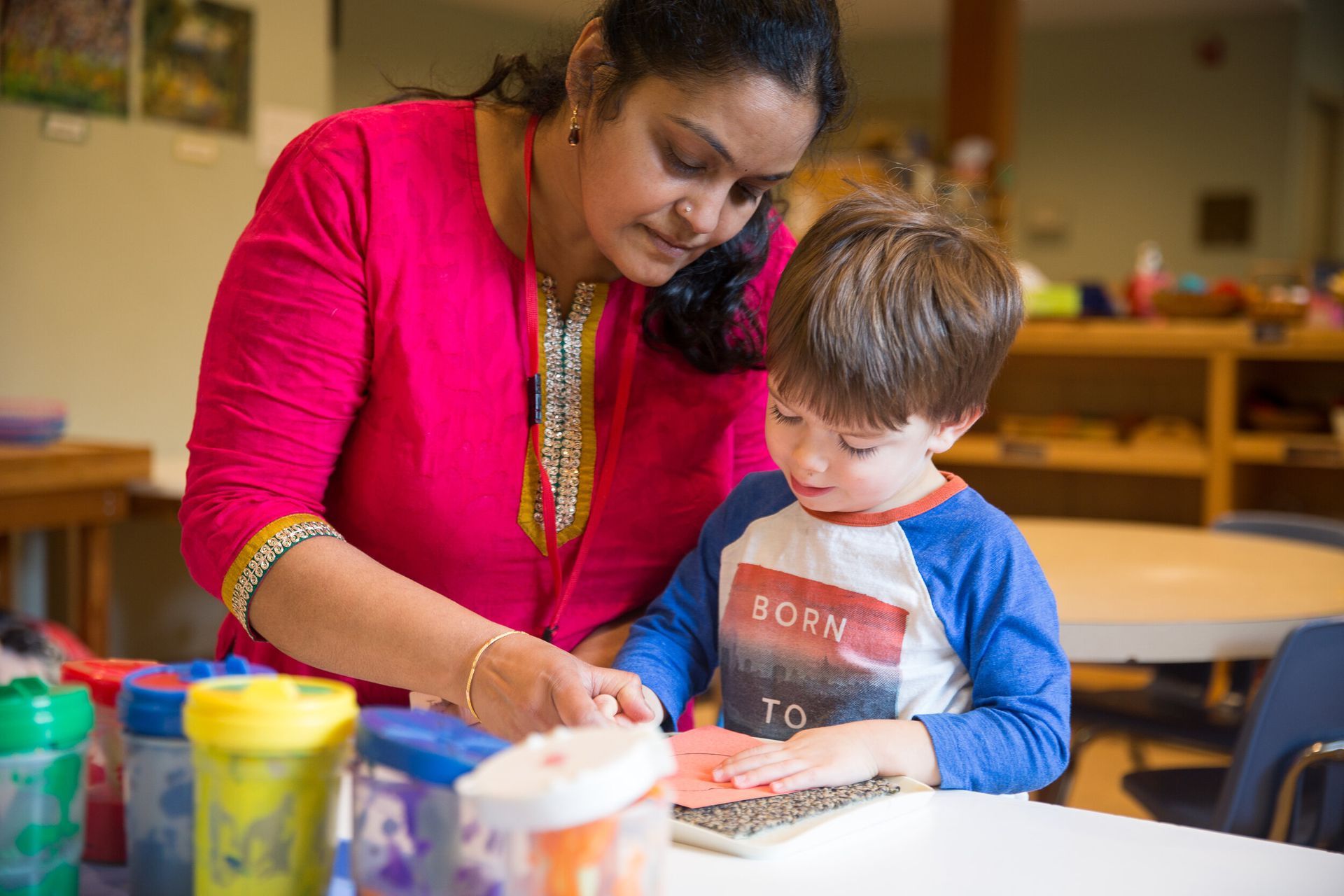
A Rounded Education at Your Child's Pace
It is the head teacher’s responsibility to ensure that children receive lessons from all areas of the curriculum: Practical Life, Sensorial, Math, Language and the Cultural areas all supporting the Cosmic Curriculum. Children progress through a curriculum area at their own pace. Those who master a skill quickly may progress and those requiring more time are supported through repetition of an activity to ensure a thorough understanding.
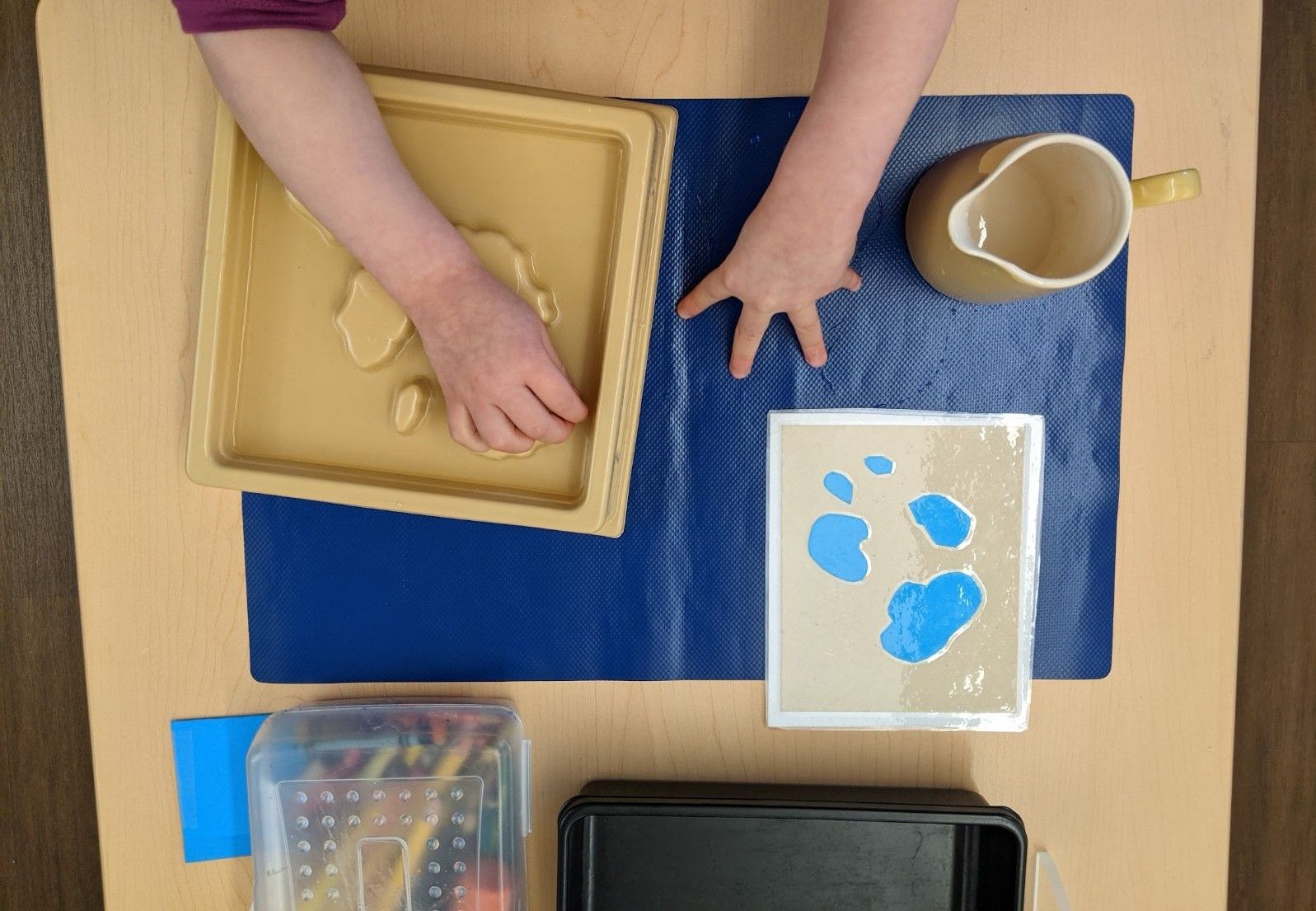
The Montessori Curriculum
While most of the day is spent in self-directed work, there are also times for group activity and play. The teacher may gather a group for songs or to tell stories about a cultural, scientific or historical theme of interest. Ample time is also given to run, dig, explore and play with friends outdoors.
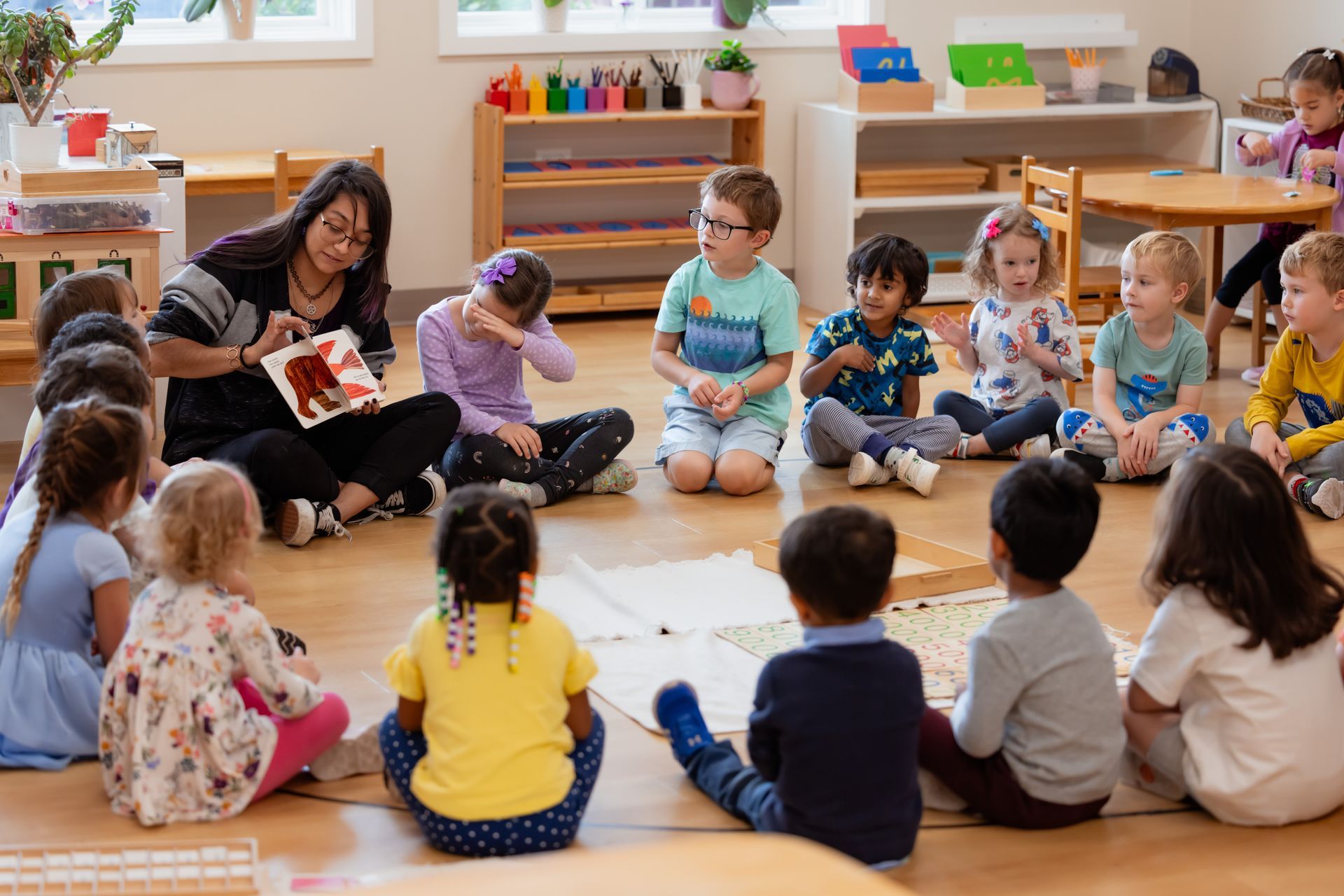
Primary Curriculum
Practical Life
The Practical Life area of the classroom provides real life experiences for children to practice self help skills in caring for themselves and the environment. Children love having the opportunity to spread their own jam, make their own juice and put on their own coat. The child sized materials and environment assist their desire to, “do it all by myself”. Children engage with these familiar activities and gain confidence in their abilities while becoming more independent. The work in the area of Practical Life also benefits children by helping to increase their ability to concentrate, problem solve, retain information, gain more refined fine and large motor control, and have the ability to follow multiple step processes. Practical life activities increase in difficulty as the child matures in their motor development and ability to focus on an activity from beginning to end. While a three year old may be stringing beads, a four or five year old will undertake a sewing project.
Visitors often notice the peacefulness and self-control seen in our students when touring our Montessori classrooms . Our students learn social norms through their practice of Grace and Courtesy lessons which introduce appropriate behavior through modeling and practice. These lessons are reinforced by our older students who model these norms daily in their regular interactions in the classroom. For instance, children will learn how to greet their teacher, ask for help, or push in their chair when they have completed an activity. Grace and Courtesy lessons include movement activities for increased coordination and self-regulation.
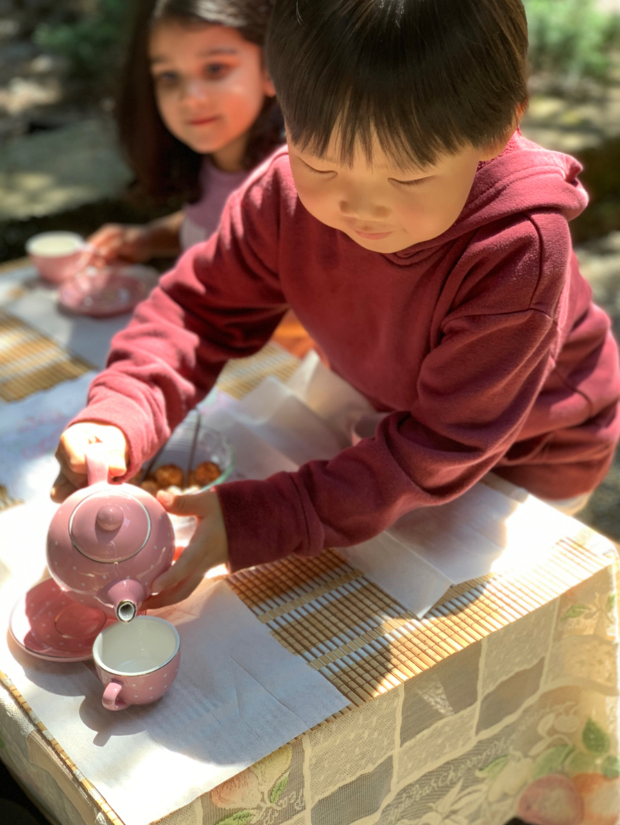
Sensorial
A scientist herself, Dr. Montessori envisioned her students to be young scientists exploring, discovering and learning through their own efforts. In order to assist the children, she created a curriculum for the senses so that children could become more accurate observers of their world. Activities in matching and naming shapes and sizes, sounds, tastes, smells, weights and temperatures of objects help to sharpen a child’s discrimination of differences using all of their senses. The child then goes on to sequencing and making classifications in their environment: which is bigger, which is loudest, which is roughest? The sensorial materials prepare the child for all areas of the curriculum including language (builds descriptive vocabulary), math (identification of geometric shapes and identifying larger sizes), science (greater ability to observe) and the ability to explore and problem solve without the fear of making a mistake.
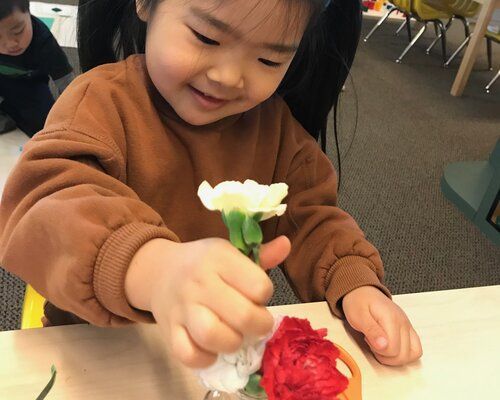
Math
Once the child has learned to complete a work cycle (choosing, completing, and cleaning up an activity) and developed their ability to concentrate from their work in the Practical Life area also learned to discriminate and sequence the visual Sensorial materials, they will begin their work in the Math area. The math materials are carefully designed, developmentally appropriate and sequenced so that the child can move successfully to the next lesson once they have mastered a concept. The younger child begins by practicing oral counting, and then identifies and quantifies numbers 1 - 10. Concepts of zero and even and odd are also introduced at this stage. As children progress they continue to count, quantify and identify numbers first to 19, then 100, and all the way to 1000. Addition to ten is introduced and then the concept of the decimal system and place value. Using the golden bead materials and numeral cards, the child engages in a sensorial experience of the four operations of addition, subtraction, multiplication, and division building deep understanding of these processes. Our older, kindergarten aged students may be introduced to more advanced lessons that cross over into our Lower Elementary curriculum such as learning their math facts, fractions, and decimal system operations using more abstract materials.

Language
The Language area not only includes the teaching of reading and writing, but also supports the child’s oral language and understanding of English through vocabulary building and grammar lessons. As young children are in a sensitive period for language acquisition where in their early years they can effortlessly go from knowing a few words to thousands of words including the correct usage of grammar, the Montessori curriculum supports this process by introducing the child to a large variety of vocabulary through the child’s work in the Practical Life, Sensorial, and cultural areas. In addition, the Language area has specific vocabulary building activities that help a child learn and classify new words (transportation, insects, clothing). Children engage in other pre-language exercises such as sequencing and activities to develop phonemic awareness. Once a child can identify the beginning sounds of words, they are introduced to the phonetic sounds of the letters of the alphabet through their work with the sandpaper letters. The child uses the moveable alphabet material to continue practicing their phonemic awareness through building words using the sounds of the letters. Three levels of reading known as the pink, blue and green levels (pink - short phonetic words and beginning sight words, blue - blends and more sight words, and green - phonograms with more advanced sight words) prepare the child to read at the non-phonetic level. Grammar studies are offered to advanced students.
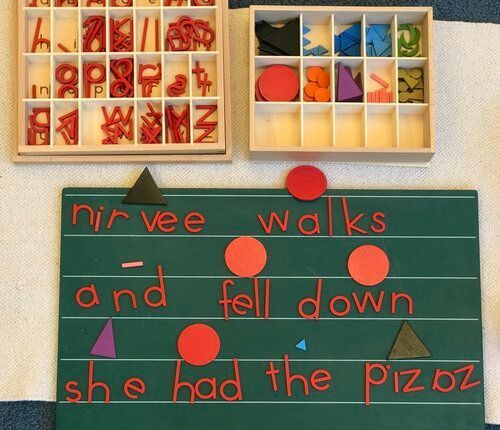
Cultural Studies for Cosmic Education
The Language area not only includes the teaching of reading and writing, but also supports the child’s oral language and understanding of English through vocabulary building and grammar lessons. As young children are in a sensitive period for language acquisition where in their early years they can effortlessly go from knowing a few words to thousands of words including the correct usage of grammar, the Montessori curriculum supports this process by introducing the child to a large variety of vocabulary through the child’s work in the Practical Life, Sensorial, and cultural areas. In addition, the Language area has specific vocabulary building activities that help a child learn and classify new words (transportation, insects, clothing). Children engage in other pre-language exercises such as sequencing and activities to develop phonemic awareness. Once a child can identify the beginning sounds of words, they are introduced to the phonetic sounds of the letters of the alphabet through their work with the sandpaper letters. The child uses the moveable alphabet material to continue practicing their phonemic awareness through building words using the sounds of the letters. Three levels of reading known as the pink, blue and green levels (pink - short phonetic words and beginning sight words, blue - blends and more sight words, and green - phonograms with more advanced sight words) prepare the child to read at the non-phonetic level. Grammar studies are offered to advanced students.
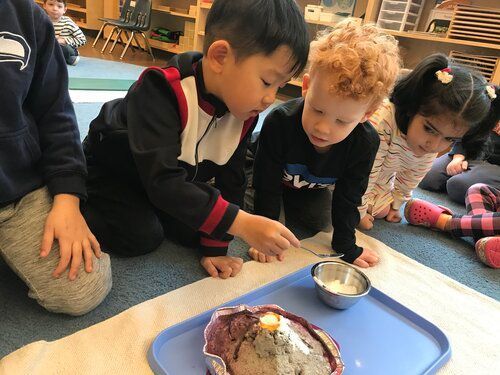
Activity Club
Before and after-school care program
Activity Club is the before and after-school care program. Additionally, a regular scheduled day is offered on certain days when school is closed. On days when school is in session, Activity Club operates in the mornings from 7:30 am to 8:30 am and in the afternoons from 2:45 pm to 5:45 pm.
